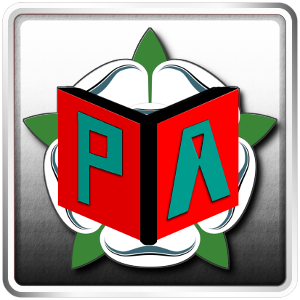Imagine spending two years researching and writing a story then discovering a place where this history comes to life! Set in the Iron Age, Fire in Time is nearing completion, so it was wonderful to visit the Crannog Museum.
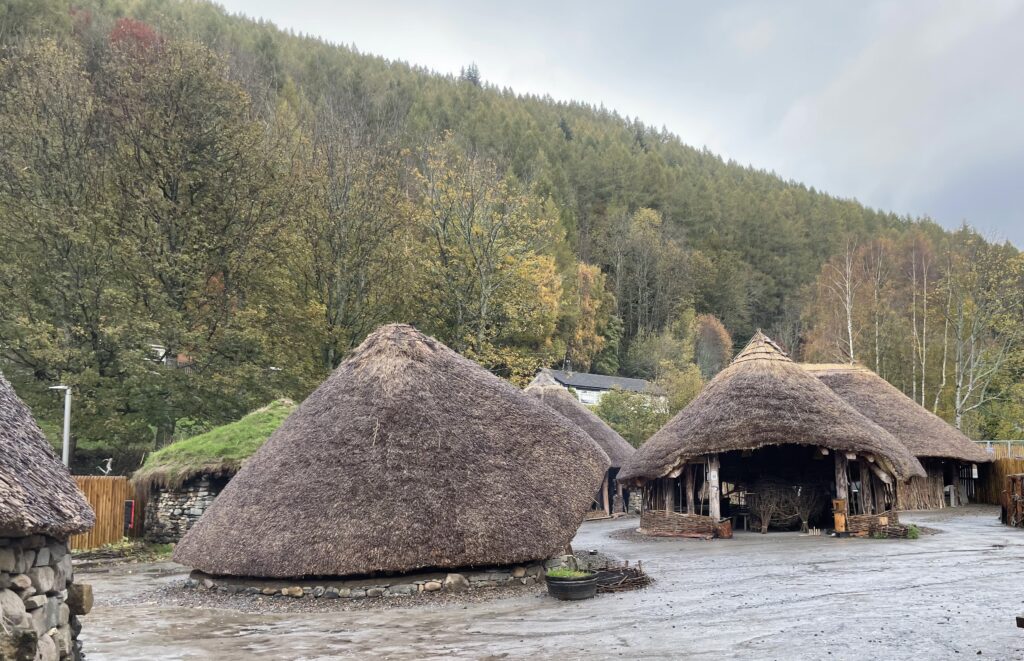
Set on the banks of beautiful Loch Tay, it is experimental archaeology at its best. From the fascinating guided tour of the artefacts, to walking round the village with the ongoing reconstruction of a crannog over its watery base, I could suspend belief and enter the Iron Age.

There are eleven islands on Loch Tay, all of which are the remains of crannogs, houses built on stilts above the water. This suggests that Loch Tay was very high status, reflected by some of the fine cloth remains and other artefacts discovered in the area. It was gratifying to see the actual whistles and a lyre after imagining what they looked like as I wrote.

Leaving the indoor display cases of objects, the outdoor reconstructed village held more delights. The forge, although not working, still held the furnace, hammers, tongs and all the fire-working tools. It wasn’t hard to imagine the sounds and smells that would emanate when it is in action.
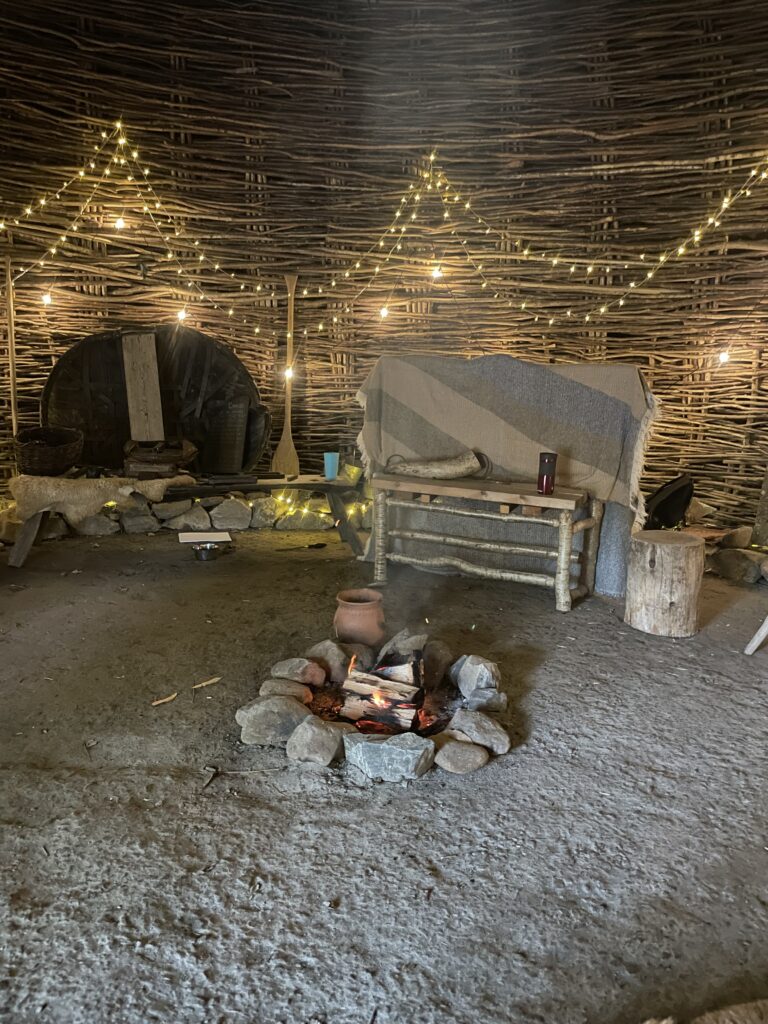
Drawn to a curtain covered doorway we discovered a charming Iron Age puppet show, about to take place. It was wonderfully entertaining for adults and children alike, with lots of fun audience participation. The tale took us on a journey of a young girl to the next village, the creatures she met and the adventures she had. Sitting on logs covered in furs, the flames flickering in the firepit and the smoke billowing into the rafters then filtering through the thatch, gave a real sense of how life would be.
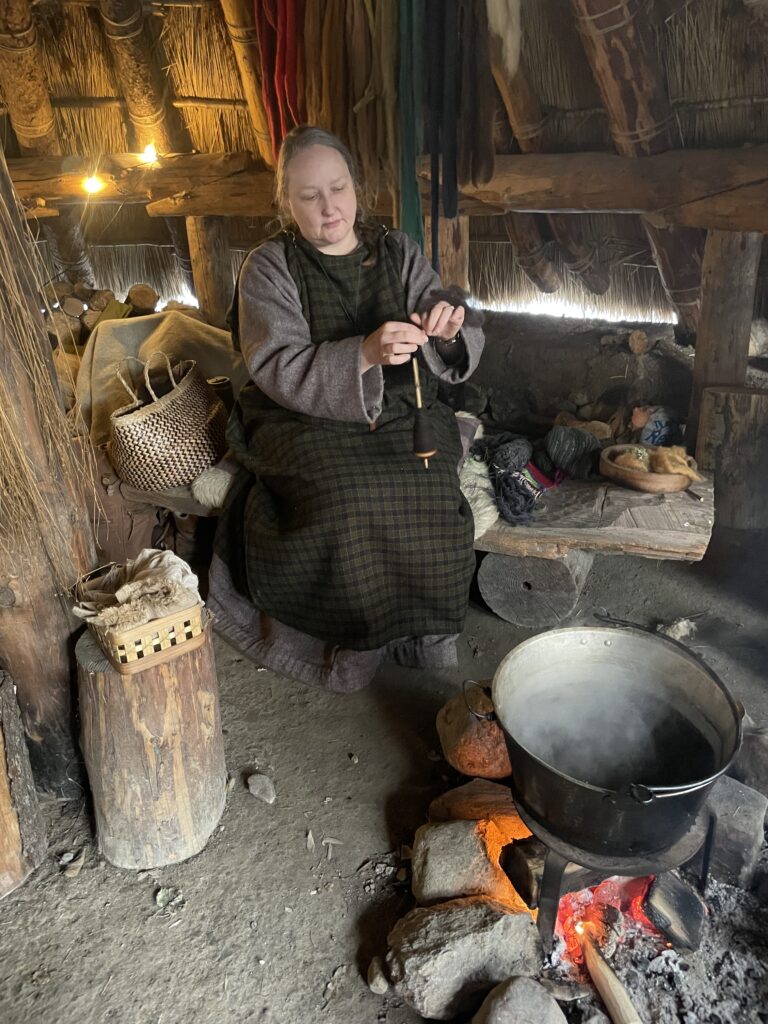
The satisfying end to the puppet show led us to chatting with the weaving archaeologist. I didn’t realise that the underclothes were linen which has anti-bacterial properties, so can take sweat and other body odours without the clothing becoming smelly. The linen was all that would have been washed. The woollen over-garments repelled water and if they got muddy they would be dried and then brushed clean.
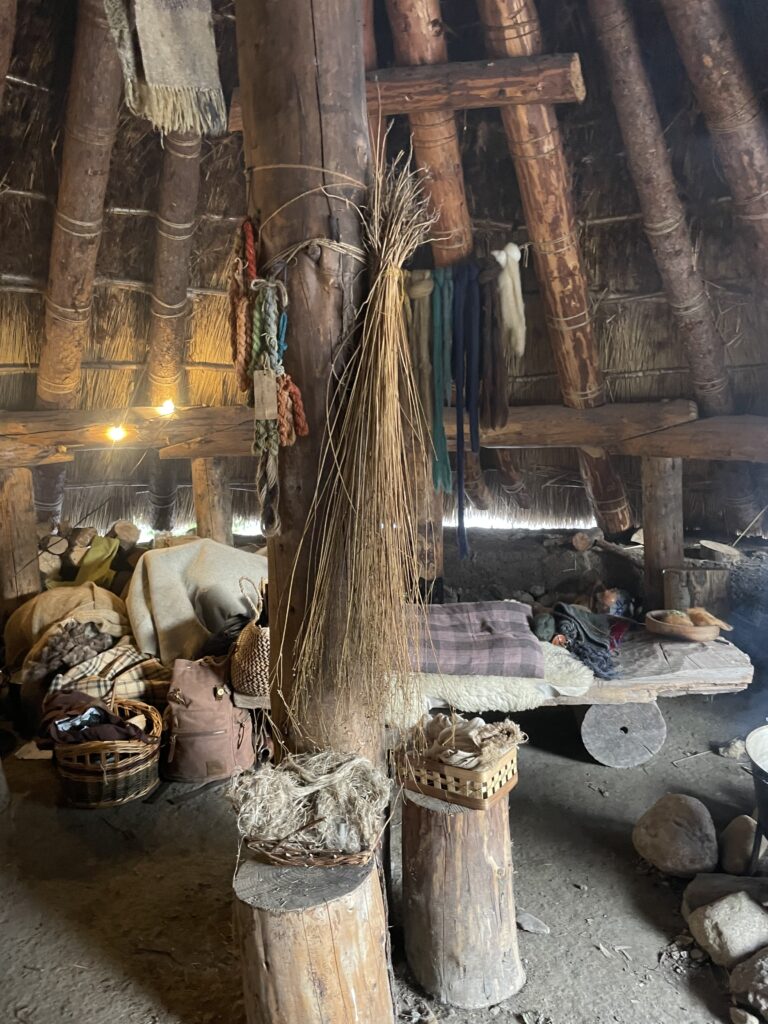
She showed us some flax drying and then a bowl of extracted flax fibres, ready to be carded and spun before being woven into linen. It sounded an arduous process.
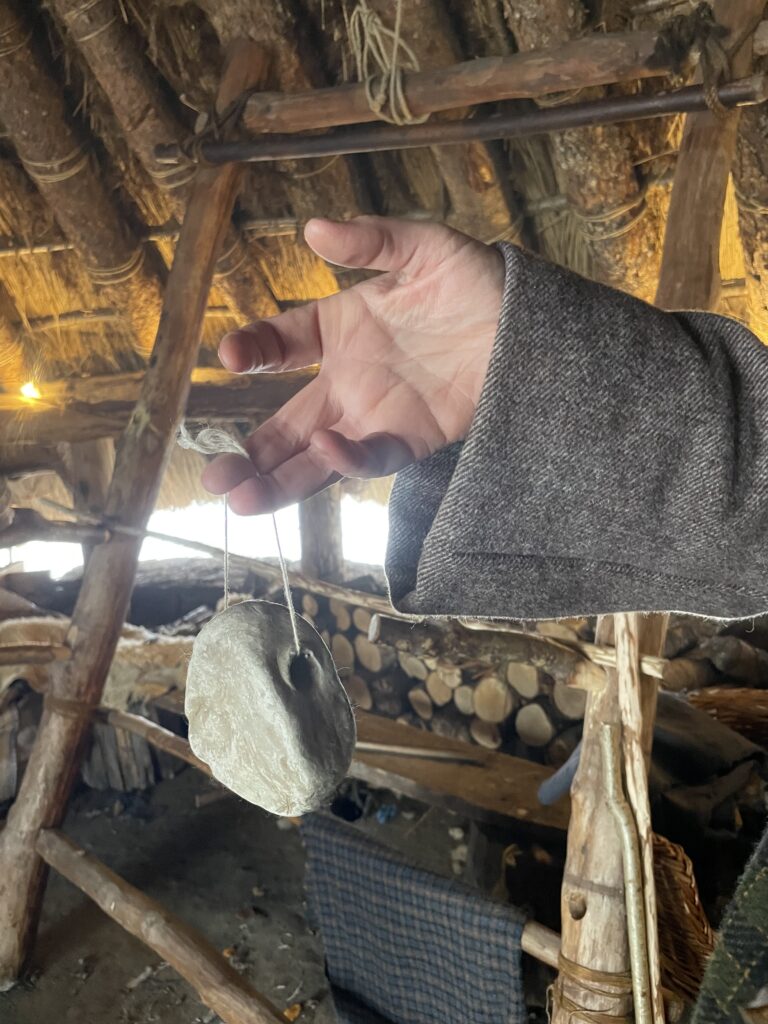
The loom wasn’t strung but she showed us the stone weights which held the warp threads in place. I was interested to discover that the threads weaken if the weaving is taking longer than a day to complete, so the stones are supported overnight on a log, to remove this strain.
A woodturner was busy whittling objects from locally harvested wood. He was working on a chair and discovering the pitfalls.
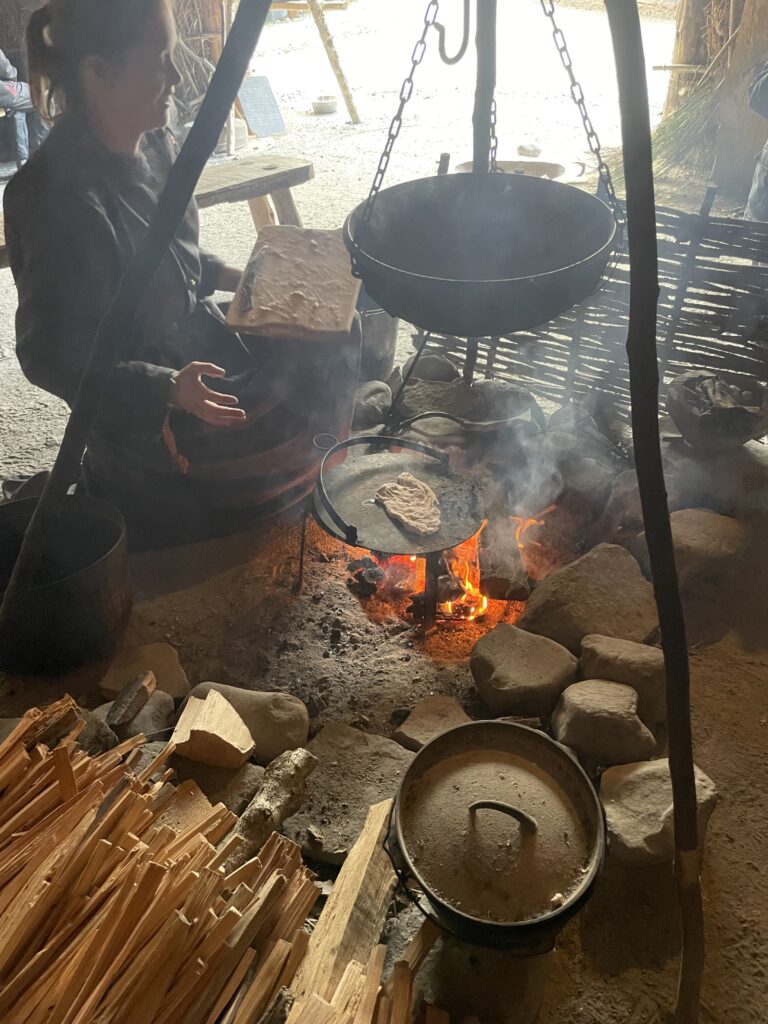
The final house revealed food preparation. I was thrilled to watch as spelt bread was made and baked on the fire. Even better was sampling it with butter, cheese, (the sort that I’d written about) and apple stew – all delicious.
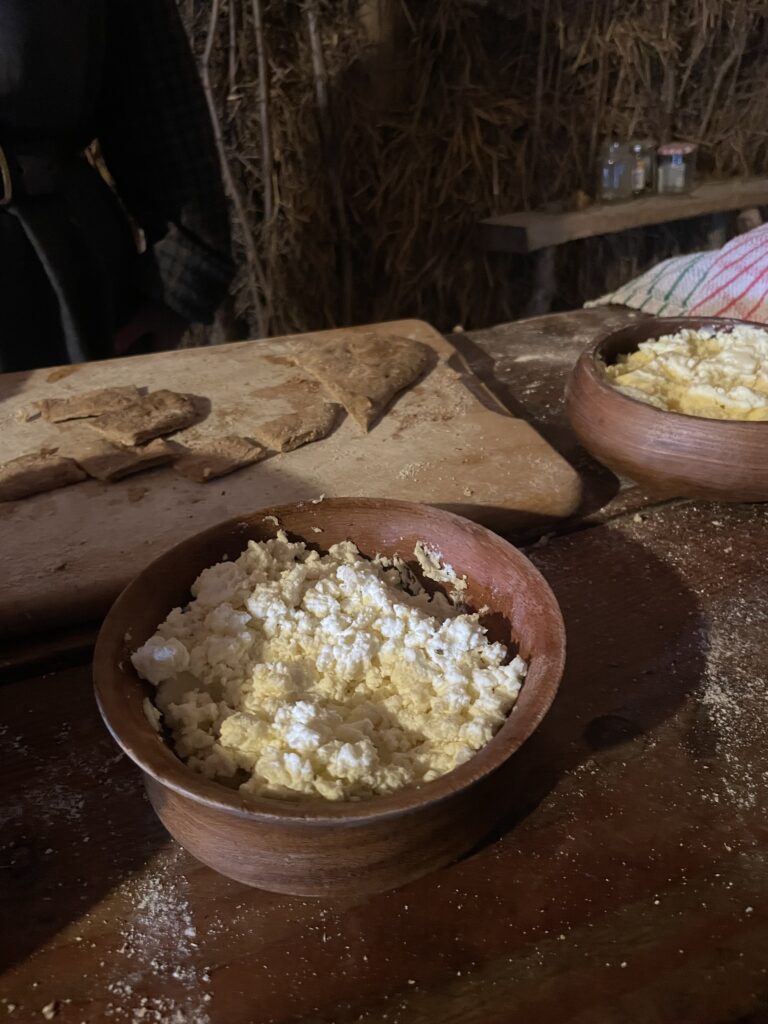
The reconstructed Crannog is underway and due to be completed next year in 2026, so it’ll be fascinating to re-visit and experience what life on the water would’ve been like. Lying on the banks of the Loch was an example of a log boat, a technology that enabled ideas, objects and many other things to move between the continental land mass and our island nation.
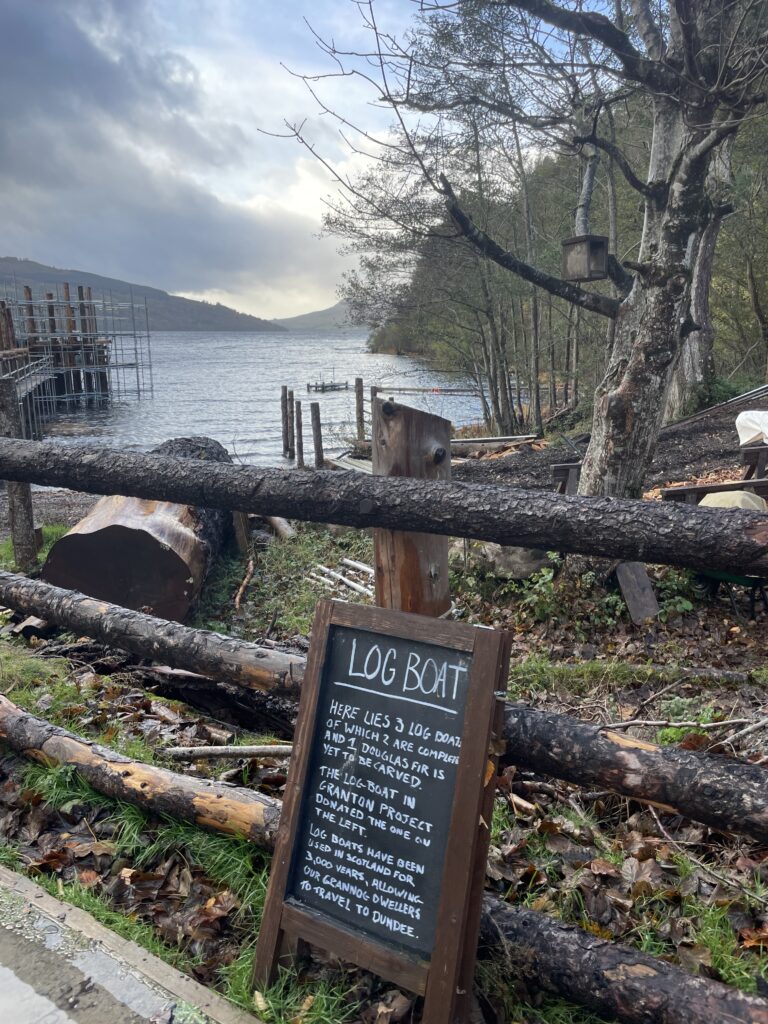
Every person working there was friendly, knowledgeable and very informative. I would highly recommend a visit to this wonderful museum.
« Back to blog page